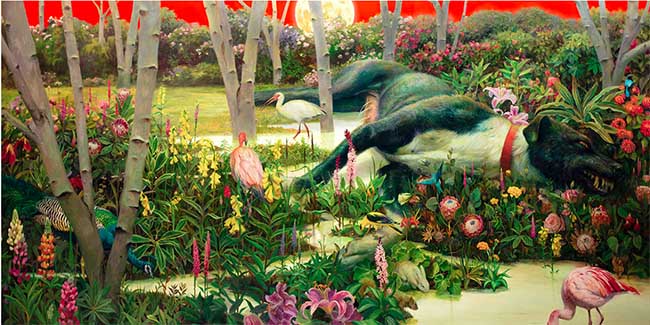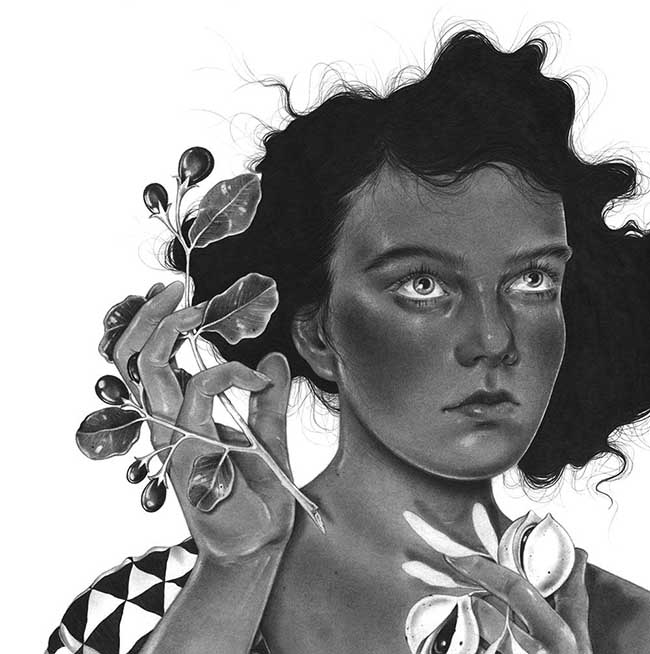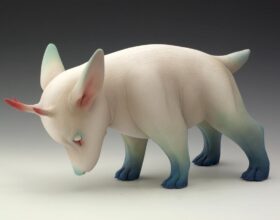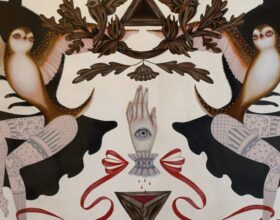MentorMe is a free resource for creatives who wish to learn from their peers. This MentorMe Q&A resource provides insights into their initial artistic journey, what obstacles they have encountered and how they found their personal style. In each guide a different group of artists and photographers will share their insights, personal experiences and advice with creatives that wish to grow and evolve in their artistic practice.
Beautiful Bizarre Magazine mentors encourage, guide and inspire emerging artists as they explore their creativity, develop their technical skills and find their personal style.
MentorMe Edition 2 Mentors:
Caia Koopman, Jim McKenzie, Kindra Nikole, Brian Viveros, Hannah Yata, Nicomi Nix Turner, Rodrigo Luff, Martin Wittfooth, and Derek Gores
In Edition 2 Beautiful Bizarre Magazine’s Mentors respond to the following questions:
- Have you changed your initial artistic field/medium since you begun your artistic journey? Or have you remained true to your original medium and passion for what you wanted to create? If not, where has your artistic journey led you and why?
- What obstacles have you encountered as an artist, and what were you able to do to overcome or navigate those to become stronger and more effective?
- How did you find your personal style? When did you feel you have reached a place where your work was recognisable and you could continue confidently with the same work?
Below 3 of the 9 mentors respond to the following question:
How did you find your personal style?
When did you feel you have reached a place where your work was recognisable and you could continue confidently with the same work?
How did you find your personal style? When did you feel you have reached a place where your work was recognisable and you could continue confidently with the same work?
Martin Wittfooth: “I think one’s personal style comes together over time. I tend to think that this is a natural process that comes with exploration. It’s probably wise to not be preoccupied with having it established too early – I think there’s a lot to be said (and less stress to carry around) about being patient and open to a lot of influence from all directions (art and everything else).
When asked for advice on this topic, my reply is usually the same: don’t make art for some phantom audience or market. Make it for yourself. Make art that speaks to you enough that you’d like to hang it on your own wall. And be honest with yourself: if you think you can make better work than you’re making then you can. Stop comparing your work to others’, but do let others be beacons of inspiration for you.
Regarding the second question, I’m not sure when it happened for me, though I believe a turning point where I no longer felt so awkward about what I was doing was in 2010. That said, the work is always evolving in some direction, and I hope that I’ll continue to look back at what I’ve made every so often and rest easy knowing that one’s style isn’t a static or frozen concept.”
How did you find your personal style? When did you feel you have reached a place where your work was recognisable and you could continue confidently with the same work?
Nicomi Nix Turner: “I think in terms of personal style, it’s just been a refining process for me. Insects, botanicals, animals and women have played roles in my worked for quite a long while now, but it’s been about 10 years of developing the way those elements are rendered that has really brought, I guess, what would be considered my personal style.
It’s all been quite a natural thing really. I never had a goal of what I want things to look like and I really disliked the notion of “want my works to look like x artist” or I’m going to do that the way x artist did that? I’ve really found that good things can happen when you allow your hand to develop and I can honestly say that although my works may be recognisable and I certainly have developed a constant aesthetic, I still allow myself to grow, learn and change my working process. I used to set a bunch of rules for myself and was quite rigid in what I told myself I could and couldn’t do in my working practice, but I’ve let loose the reins a bit and it’s been nice to see happy surprises occurring once more in my works.”
How did you find your personal style? When did you feel you have reached a place where your work was recognisable and you could continue confidently with the same work?
Brian Viveros: “I found my true style and voice when I finally decided just to let go and paint from what I really knew and loved. My “real” voice ultimately came from the childhood influences that grew into adult passions – my love of wrestling, boxing, bullfighting, comics, the surreal and absurd, the beautiful and the bizarre, the list goes on. I incorporated all of these aesthetics and cultural influences into my paintings and my depiction of the female form.
I was big on headgear and helmets as a kid, something I collect obsessively to this day and incorporate as props into my work. I love Lucha Libra wrestling and boxing, vintage military gear and Day of the Dead art, so all of these individual elements gradually appeared and have been integrated into my aesthetic and imagery ever since. And oh yeah, I can’t forget the smoking, yes, I used to love smoking.
Keeping things bold and easy to read was going to be my thing. It was going to be an important aspect of my work as it came into its own. I wanted the pieces to be impactful and commanding, the old ‘less is more’ would be my approach and key element in order to bring my paintings to life. The very first Dirtyland girl was painted for my first solo show in Switzerland back in 2007, and that’s when everything came together, the red sea had parted, I had a new found energy and my mind was full of new ideas. That pivotal show is when I knew that I was on the right path and I even felt like something significant was happening, based on the reactions of people viewing this work for the first time.
There was something distinct and new about my girls, they were mine, and they conveyed a signature “Viveros feel”. The red rose, the cigarette, the stare, the eyes… I felt like I had discovered a new signature look and approach to pin-up art. My version would be the “anti-pin-up”. My women would represent strength and power; tough but sensual, they would embody the courage of the feminine as empowered Victor. Impassable and steadfast, my Dirtyland warriors could not be broken down.
I was building an army of something special and it was like a switch went off and a voice inside my head was telling me “this is who you are, you’re no holding back”. I’d found my niche, and the people loved it. After that, the ideas just poured out like wine or blood, both of which I like. My work became very recognizable and became a signature of sorts from that point on. Since then, Dirtyland army has continued to grow and take me all around the world. I’m thankful for the fans and supporters and everything.”
To read the other Mentors’ answers to this question or any other in Edition 2 please click here to download our FREE Artist Resource, MentorMe.








